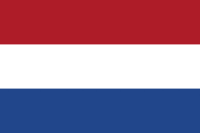Categories Online-Shop World Coins Europe Netherlands
Netherlands

After the division of the Frankish kingdom, the lower lands belonged to the East Frankish Kingdom and then to the Holy Roman Empire. Under Philipp II of Spain from the House of Habsburg, it came to a series of uprisings starting in 1566. He sent the Duke of Alba to the Netherlands to quell the uprising. From 1572 almost all the cities of the Netherlands took the side of William of Orange, who led the resistance against Alba.
The Union of Utrecht of 1579 - a covenant against Spanish rule - became the founding act of a new state, the Republic of the United Netherlands. In 1581 the participants declared their independence from the Spanish crown. However, it was only after the Eighty Years' War that the independence of the Netherlands from Spain was recognized in the Peace of Westphalia on May 15, 1648. As a result, as the Republic of the Seven United Provinces, the Netherlands grew into one of the largest naval and economic powers of the 17th century.
In 1795 the Batavian Republic was founded with French support (named after the Germanic tribe of the Bataver, who had first settled the area between the Rhine and the Meuse); In 1806, the French emperor Napoleon I formed from it the Kingdom of Holland. King became Louis-Napoléon Bonaparte, a brother of the Emperor. In July 1810, the Emperor of France dissolved the Kingdom of Holland again because he was not satisfied with the rule of his brother. The Netherlands regained its independence in 1813. William I of Oranien-Nassau became the sovereign prince of the Netherlands. In 1815 he became king.
|
Product no.: 338729
Netherlands, Zeeland, Republic of the United Netherlands, 1543-1795, Rijksdaalder 16__ |
115.00 €
*
In stock |
|
|
|



